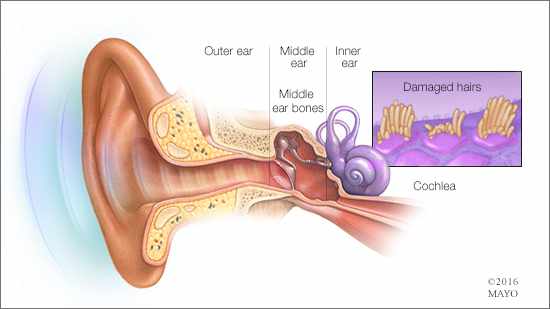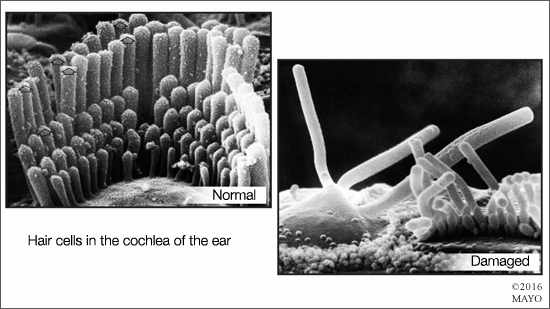-
Mayo Clinic Q and A: Hearing loss and how hearing aids may help
 DEAR MAYO CLINIC: Why do hearing aids work for some people but not others?
DEAR MAYO CLINIC: Why do hearing aids work for some people but not others?
ANSWER: The type of hearing loss you have and how severe it is can impact how well a hearing aid works for you. A variety of hearing aids are available, so if the first one you try isn’t helpful, ask your audiologist to recommend another. For people who have hearing loss that does not benefit from hearing aids, another device called a cochlear implant may be a useful alternative.
Your ear has three areas: the outer, middle and inner ear. When you hear, sound waves pass through the outer ear and cause vibrations at the eardrum, which are transmitted through the three small bones of the middle ear to the fluid-filled inner ear. The inner ear is a snail-shaped structure called the cochlea.
Within the cochlea are thousands of tiny hair cells that help translate the sound vibrations into electrical signals that are sent to your brain through your auditory nerve. The vibrations of different sounds affect these tiny hair cells in different ways, causing different signals to be sent to your brain. That’s how you distinguish one sound from another.
In most people who develop hearing loss, the hair cells in the cochlea are damaged or missing, usually as a result of aging or exposure to loud noise, or due to genetic reasons. That means the signals can’t be transmitted efficiently to the brain. Hearing aids don’t replace or regenerate the hair cells that have been damaged, so they can’t completely restore normal hearing. They can improve your ability to hear by amplifying sound, helping you hear the sounds you’ve had trouble hearing. But even when the sound level increases with a hearing aid, you still may notice some hearing loss.
Hearing aids don’t replace or regenerate the hair cells that have been damaged, so they can’t completely restore normal hearing. They can improve your ability to hear by amplifying sound, helping you hear the sounds you’ve had trouble hearing. But even when the sound level increases with a hearing aid, you still may notice some hearing loss.
Most hearing aids are digital and can be programmed individually to analyze and adjust sound based on your specific hearing loss, listening needs and the level of the sounds around you. Although hearing aids can be programmed to amplify certain sounds, they cannot eliminate all background noise.
Hearing aids vary significantly in price, size and features. Some fit completely inside your ear canal. Some are placed in the outer portion of your ear. Others hook over the top of your ear and sit behind it. Your audiologist can review your options and help you choose which one might be best for your needs.
It can take time to adjust to a new hearing aid and decide if it’s right for you. That’s why you have a trial period for hearing aids. During the trial period, you work closely with your audiologist to determine what is best for your hearing health needs. If you have concerns, don’t hesitate to tell your audiologist. He or she may be able to adjust your hearing aid or offer a different type of hearing aid that suits you better.
If your hearing loss is severe and cannot be managed with hearing aids, a cochlear implant could be another treatment option if it’s medically appropriate for you. The device works by bypassing the hair cells in your inner ear that don’t work and giving the brain the ability to perceive sound once again. A cochlear implant includes an external processor that fits behind your ear and an internal receiver implanted under the skin behind your ear.
For most people with mild to moderate hearing loss, though, hearing aids can offer significant improvement in hearing. Working with your audiologist, it’s likely you will be able to find a hearing aid that fits your needs. — Dr. Gayla Poling, Audiology, Mayo Clinic, Rochester, Minnesota







